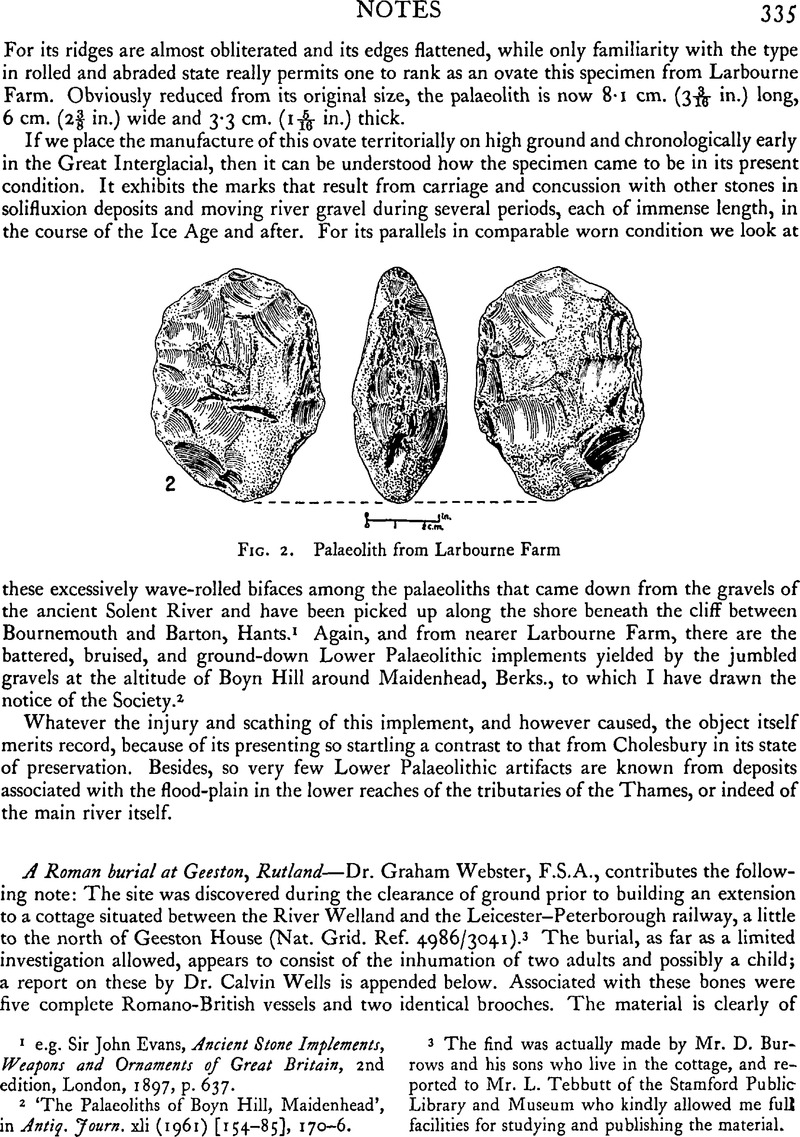No CrossRef data available.
Article contents
A Roman burial at Geeston, Rutland
Published online by Cambridge University Press: 29 November 2011
Abstract

- Type
- Notes
- Information
- Copyright
- Copyright © The Society of Antiquaries of London 1966
References
page 335 note 3 The find was actually made by Mr. D. Burrowsand his sons who live in the cottage, and reported to Mr. L. Tebbutt of the Stamford Public Library and Museum who kindly allowed me full facilities for studying and publishing the material.
page 336 note 1 This building in the grounds of Tixover Grange has been partially excavated by Mr. S. E. Thomas.
page 336 note 2 A tessellated pavement was found near the Post Office in 1902 when two cottages were built (Proc. Soc. Ant., 2nd ser. xix (1901–1903), 194–5);Google Scholar this site would be within half a mile of these burials.
page 336 note 3 The precise site of this villa is not known, but pottery has been found in the fields east of the village between the meadows and the main road.
page 336 note 4 There is a discussion on this point in Bagendon: A Belgic Oppidum (1961), pp. 179–82.Google Scholar
page 336 note 5 There are examples from Chorley and in the Backworth hoard (Guide to the Antiquities of the British Museum, 1922, p. 54Google Scholar and fig. 62). Single brooches with fragments of chain still attached have been found in London (ibid., fig. 63, and London in Roman Times, 1930, fig. 29, no. 35).Google Scholar
page 336 note 6 I am indebted to Mr. R. A. P. Peek for the pottery drawings.
page 336 note 7 Some of the prototypes of finer quality could be cited from Camulodunum (Camulodunum, 1947, form 214,Google Scholar for no. 1; form 251, for no. 2; form 17, for no. 3 and form 105, for no. 4).


